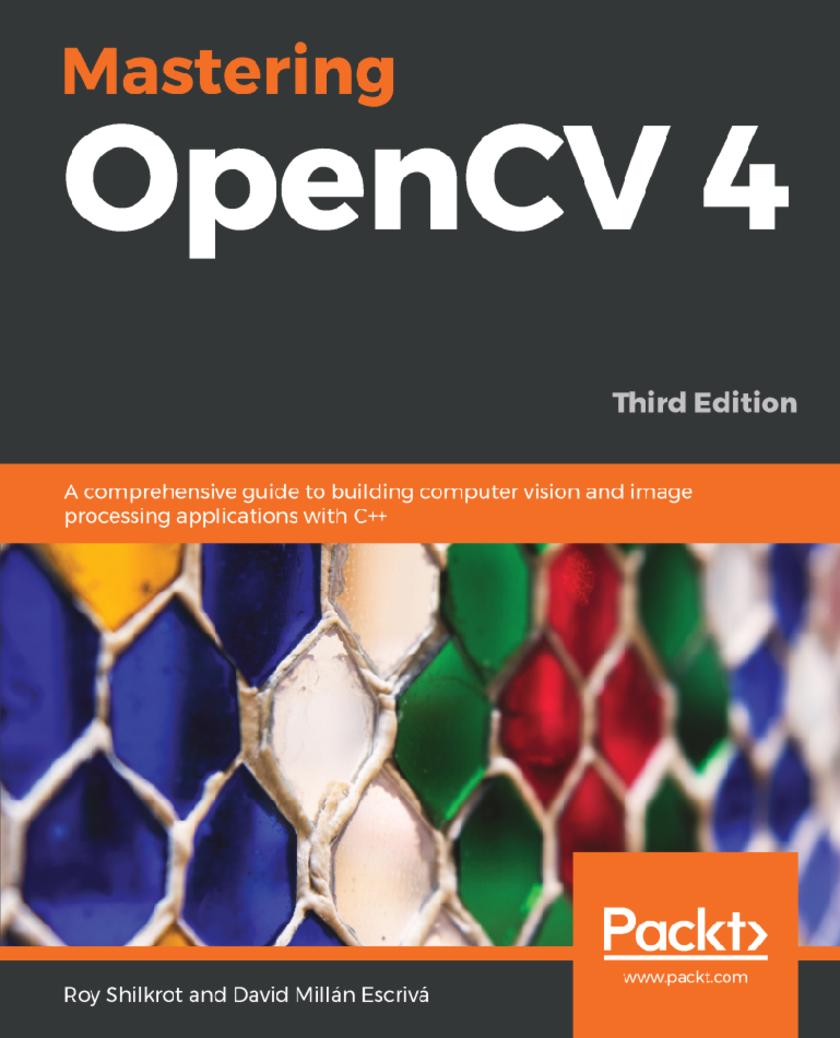
Mastering OpenCV 4
¥81.74
Work on practical computer vision projects covering advanced object detector techniques and modern deep learning and machine learning algorithms Key Features *Learn about the new features that help unlock the full potential of OpenCV 4 *Build face detection applications with a cascade classifier using face landmarks *Create an optical character recognition (OCR) model using deep learning and convolutional neural networks Book Description Mastering OpenCV, now in its third edition, targets computer vision engineers taking their first steps toward mastering OpenCV. Keeping the mathematical formulations to a solid but bare minimum, the book delivers complete projects from ideation to running code, targeting current hot topics in computer vision such as face recognition, landmark detection and pose estimation, and number recognition with deep convolutional networks. You’ll learn from experienced OpenCV experts how to implement computer vision products and projects both in academia and industry in a comfortable package. You’ll get acquainted with API functionality and gain insights into design choices in a complete computer vision project. You’ll also go beyond the basics of computer vision to implement solutions for complex image processing projects. By the end of the book, you will have created various working prototypes with the help of projects in the book and be well versed with the new features of OpenCV4. What you will learn *Build real-world computer vision problems with working OpenCV code samples *Uncover best practices in engineering and maintaining OpenCV projects *Explore algorithmic design approaches for complex computer vision tasks *Work with OpenCV’s most updated API (v4.0.0) through projects *Understand 3D scene reconstruction and Structure from Motion (SfM) *Study camera calibration and overlay AR using the ArUco Module Who this book is for This book is for those who have a basic knowledge of OpenCV and are competent C++ programmers. You need to have an understanding of some of the more theoretical/mathematical concepts, as we move quite quickly throughout the book.
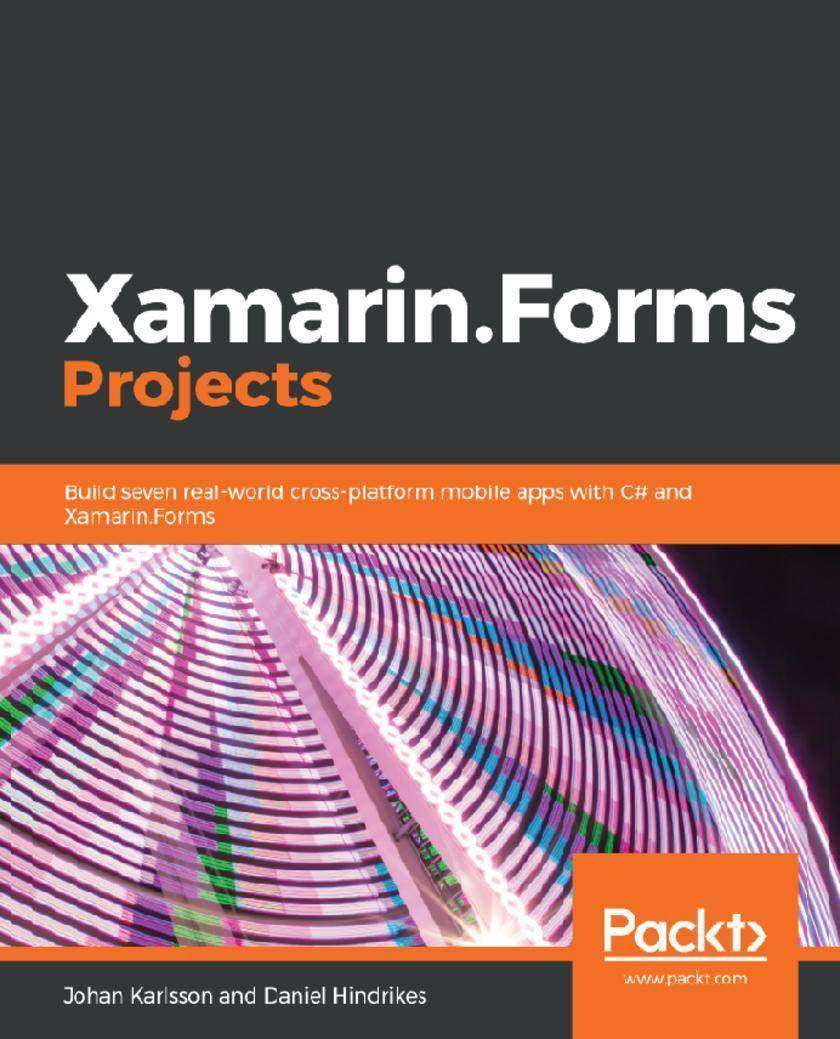
Xamarin.Forms Projects
¥71.93
Explore Xamarin.Forms to develop dynamic applications Key Features *Explore SQLite through Xamarin to store locations for various location-based applications *Make a real-time serverless chat service by using Azure SignalR service *Build Augmented Reality application with the power of UrhoSharp together with ARKit and ARCore Book Description Xamarin.Forms is a lightweight cross-platform development toolkit for building applications with a rich user interface. In this book you'll start by building projects that explain the Xamarin.Forms ecosystem to get up and running with building cross-platform applications. We'll increase in difficulty throughout the projects, making you learn the nitty-gritty of Xamarin.Forms offerings. You'll gain insights into the architecture, how to arrange your app's design, where to begin developing, what pitfalls exist, and how to avoid them. The book contains seven real-world projects, to get you hands-on with building rich UIs and providing a truly cross-platform experience. It will also guide you on how to set up a machine for Xamarin app development. You'll build a simple to-do application that gets you going, then dive deep into building advanced apps such as messaging platform, games, and machine learning, to build a UI for an augmented reality project. By the end of the book, you'll be confident in building cross-platforms and fitting Xamarin.Forms toolkits in your app development. You'll be able to take the practice you get from this book to build applications that comply with your requirements. What you will learn *Set up a machine for Xamarin development *Get to know about MVVM and data bindings in Xamarin.Forms *Understand how to use custom renderers to gain platform-specific access *Discover Geolocation services through Xamarin Essentials *Create an abstraction of ARKit and ARCore to expose as a single API for the game *Learn how to train a model for image *classification with Azure Cognitive Services Who this book is for This book is for mobile application developers who want to start building native mobile apps using the powerful Xamarin.Forms and C#. Working knowledge of C#, .NET, and Visual Studio is required.

Mastering JavaScript Single Page Application Development
¥334.25
An in-depth guide to exploring the design, architecture, and techniques behind building sophisticated, scalable, and maintainable single-page applications in JavaScriptAbout This Book·Build large-scale, feature-complete SPAs by leveraging widely used tools and techniques.·Gain a solid understanding of architecture and SPA design to build applications using the library or framework of your choice.·Explore the various facets of SPA development to build web apps that are fast, scalable, and easy to test.Who This Book Is ForThis book is ideal for JavaScript developers who want to build complex single-page applications in JavaScript. Some basic understanding of SPA concepts will be helpful but not essential.What You Will Learn·Organize your development environment using the command line with NPM, Bower, and Grunt.·Choose an accurate design pattern for your app·Understand modular JavaScript programming and Node.js·Interact with a REST API using JavaScript and AJAX with practical examples·Build a single page application using the MEAN stack·Connect your app across popular social media platforms such as Facebook, Twitter, and LinkedIn·Test your app, both on the server side and in views·Prepare your app for the real world and deploy it to HerokuIn DetailSingle-page web applications—or SPAs, as they are commonly referred to—are quickly becoming the de facto standard for web app development. The fact that a major part of the app runs inside a single web page makes it very interesting and appealing. Also, the accelerated growth of browser capabilities is pushing us closer to the day when all apps will run entirely in the browser.This book will take your JavaScript development skills to the next level by teaching you to create a single-page application within a full-stack JavaScript environment. Using only JavaScript, you can go from being a front-end developer to a full-stack application developer with relative ease.You will learn to cross the boundary from front-end development to server-side development through the use of JavaScript on both ends. Use your existing knowledge of JavaScript by learning to manage a JSON document data store with MongoDB, writing a JavaScript powered REST API with Node.js and Express, and designing a front-end powered by AngularJS.This book will teach you to leverage the MEAN stack to do everything from document database design, routing REST web API requests, data-binding within views, and adding authentication and security to building a full-fledged, complex, single-page web application.In addition to building a full-stack JavaScript app, you will learn to test it with JavaScript-powered testing tools such as Mocha, Karma, and Jasmine. Finally, you will learn about deployment and scaling so that you can launch your own apps into the real world.Style and approachFollowing a structured approach, this book helps readers gain expertise in SPA development. Its thorough coverage of SPA architecture and design, along with practical use cases, provides readers with a clear path to building applications with the library of their choice. For readers who are afraid to take the plunge straightaway, the book also offers step-by-step guidance on developing a complex web app.
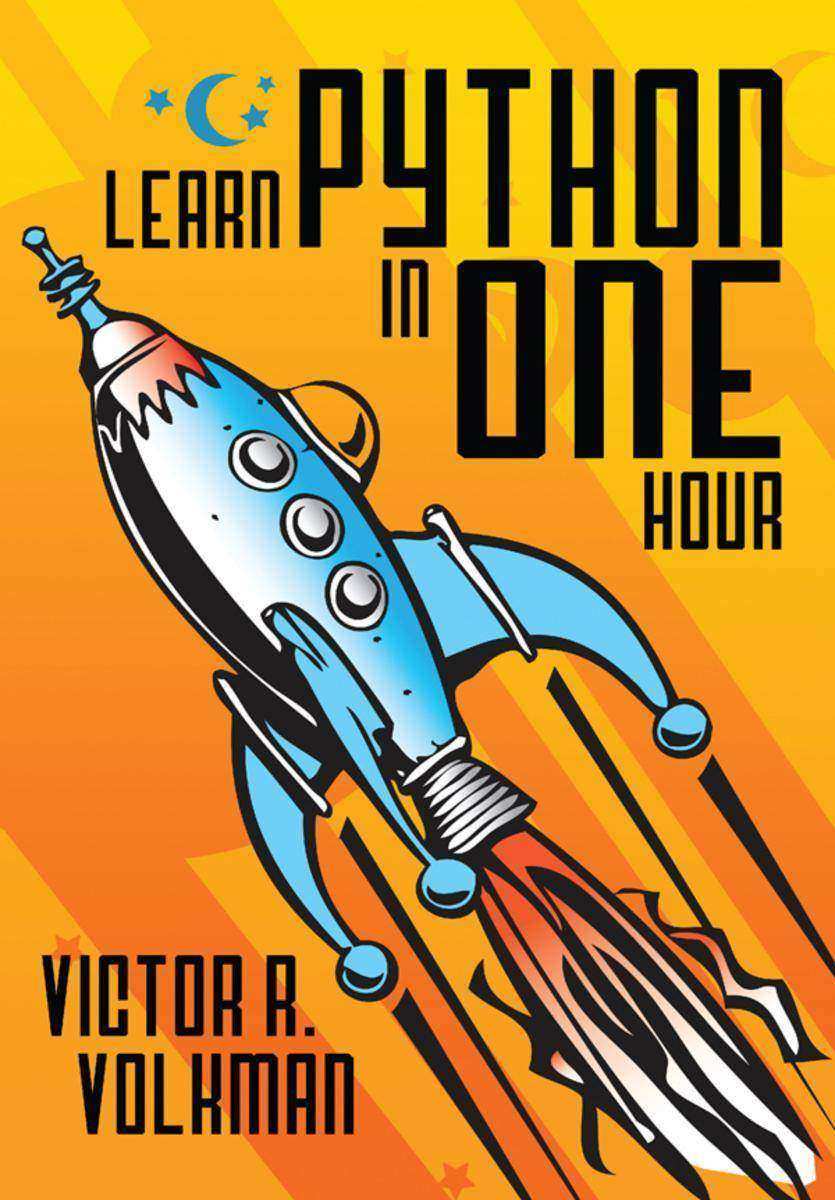
Learn Python in One Hour:Programming by Example
¥40.79
You're already a smart person, you don't need a 1000+ page book to get you started on the web's fastest growing programming platform. Instead, Learn Python in One Hour delivers on the promise of code literacy while saving your most precious commodity - time itself. Volkman's innovative programming-by-example approach means you focus on usage, not mindless detail. Based on the author's sold-out live seminars, you'll see Python's flexible coding technique in action as we refactor from script to procedural to object-oriented during actual problem solving. In a seven-lesson progression, you'll be exposed to this and more: Basic file input and output operations Exception handling with try/except Using functions to compute and return multiple values Basic elements of a class definition and how to call methods Lists, dictionaries, sets, and other collections Iteration through collections, files, sorted sets Converting lists to strings and vice-versa Six most common Python pitfalls Take the One Hour challenge and see if you too can pick up 90% of syntax and semantics in less time than you probably spend commuting each day.About the Author Victor R. Volkman graduated cum laude from Michigan Technological University with a BS in Computer Science in 1986. Since then, he has written for numerous publications, including The C Gazette, C++ Users Journal, Windows Developers Journal, and many others. He has taught college-level programming courses at Washtenaw Community College and has served on its Computer Information Science (CIS) Faculty Advisory Board for more than a decade. Volkman says Python helped him "rediscover the joy of programming again." www.volkman.org From Modern Software Press
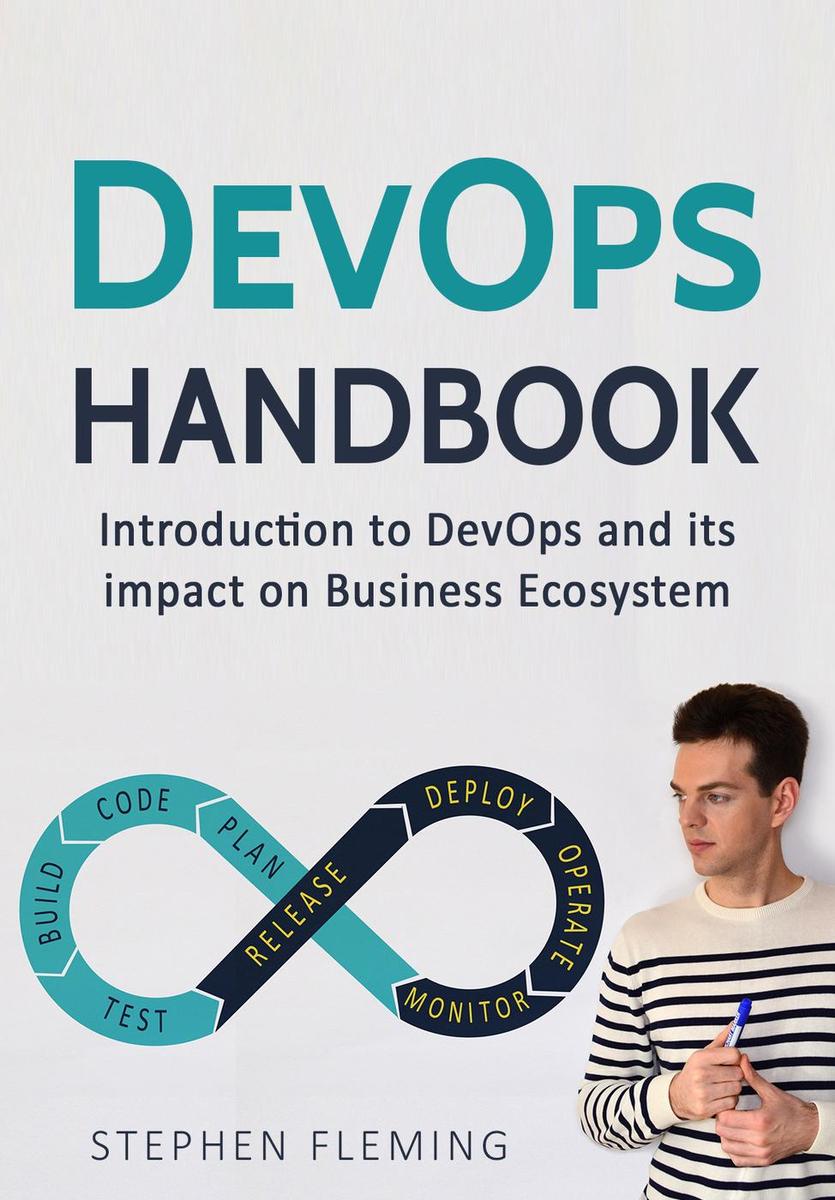
DevOps:Introduction to DevOps and its impact on Business Ecosystem
¥32.62
“It is not the strongest of the species that survive, nor the most intelligent, but the one most responsive to change.”-?Charles Darwin As the industry is moving towards maximum digitization there is a consensus that DevOps practices help you deliver software faster, more reliable, and with fewer errors. DevOps is set of practices and cultural values that have been proven to help organizations of all sizes improve their software release cycles, software quality, security, and ability to get rapid feedback on product development. This book is aimed at Consultant, Project Manager and people from techno-commercial profiles who would be explaining the benefits of DevOps to the client, internal leadership or project teams. As the crux of DevOps methodology lies in the cultural transformation of the organization, people who are stakeholders in shaping this change must understand the overall alignment of business goals with this methodology. You would get to explore: ·What is DevOps·Relationship between Agile, Scrum, Kanban and DevOps·DevOps Adoption:? Organizational cultural Change·DevOps Ecosystem·Emerging Trends·DevOps success stories In the Bonus Booklet you will find out: ·DevOps Job Market overview·Insights into DevOps job application·People to follow on twitter “Grab your copy today along with Bonus DevOps Booklet”
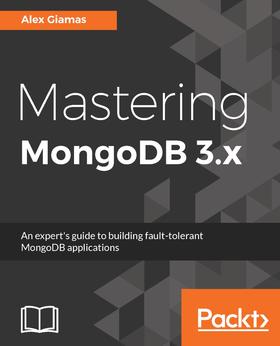
Mastering MongoDB 3.x:An expert's guide to building fault-tolerant MongoDB appli
¥259.95
An expert's guide to build fault tolerant MongoDB applicationAbout This Book·Master the advanced modeling, querying, and administration techniques in MongoDB and become a MongoDB expert·Covers the latest updates and Big Data features frequently used by professional MongoDB developers and administrators·If your goal is to become a certified MongoDB professional, this book is your perfect companionWho This Book Is ForMastering MongoDB is a book for database developers, architects, and administrators who want to learn how to use MongoDB more effectively and productively.If you have experience in, and are interested in working with, NoSQL databases to build apps and websites, then this book is for you.What You Will Learn·Get hands-on with advanced querying techniques such as indexing, expressions, arrays, and more.·Configure, monitor, and maintain highly scalable MongoDB environment like an expert.·Master replication and data sharding to optimize read/write performance.·Design secure and robust applications based on MongoDB.·Administer MongoDB-based applications on-premise or in the cloud·Scale MongoDB to achieve your design goals·Integrate MongoDB with big data sources to process huge amounts of dataIn DetailMongoDB has grown to become the de facto NoSQL database with millions of users—from small startups to Fortune 500 companies. Addressing the limitations of SQL schema-based databases, MongoDB pioneered a shift of focus for DevOps and offered sharding and replication maintainable by DevOps teams. The book is based on MongoDB 3.x and covers topics ranging from database querying using the shell, built in drivers, and popular ODM mappers to more advanced topics such as sharding, high availability, and integration with big data sources.You will get an overview of MongoDB and how to play to its strengths, with relevant use cases. After that, you will learn how to query MongoDB effectively and make use of indexes as much as possible. The next part deals with the administration of MongoDB installations on-premise or in the cloud. We deal with database internals in the next section, explaining storage systems and how they can affect performance. The last section of this book deals with replication and MongoDB scaling, along with integration with heterogeneous data sources. By the end this book, you will be equipped with all the required industry skills and knowledge to become a certified MongoDB developer and administrator.Style and approachThis book takes a practical, step-by-step approach to explain the concepts of MongoDB. Practical use-cases involving real-world examples are used throughout the book to clearly explain theoretical concepts.
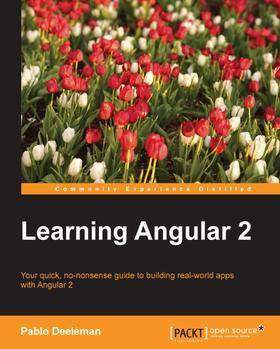
Learning Angular 2
¥297.10
Your quick, no-nonsense guide to building real-world apps with Angular 2About This Book·The first and best overview of Angular 2 on the market—this guide gathers together everything there is to know about Angular 2 and groups it into intuitive sections.·This book is your detailed map of every feature and its use cases.·The author has done all the hard work of fitting everything Angular 2 means for developers together for you, making this book the quickest way to learn Angular 2 from scratch.Who This Book Is ForThis book is targeted at web developers who want to build the next generation of state-of-the-art mobile and desktop web applications with Angular 2. This book does not require you to have prior exposure to either Angular 1.x or 2, although comprehensive knowledge of JavaScript is assumed. It's great for newcomers to Angular who learn best through clear explanations and definitions of concepts.What You Will Learn·Set up your working environment in order to have all the tools you need to start building Angular 2 components with minimum effort·Get up to speed with TypeScript, a powerful typed superset of JavaScript that compiles to plain JavaScript·Take full control of how your data is rendered and updated upon data changes·Build powerful web applications based on structured component hierarchies that emit and listen to events and data changes throughout the elements tree·Explore how to consume external APIs and data services and allow data editing by harnessing the power of web forms made with Angular 2·Deliver seamless web navigation experiences with application routing and state handling common features with ease·Discover how to bulletproof your applications by introducing smart unit testing techniques and debugging toolsIn DetailAngular 2 was conceived as a complete rewrite in order to fulfill the expectations of modern developers who demand blazing fast performance and responsiveness from their web applications.This book will help you learn the basics of how to design and build Angular 2 components right from the beginning, providing full coverage of the TypeScript syntax required to follow the examples included. From that point on, we will build upon our first components, interconnect them, and give shape to larger web applications. We will then move to implementing routing in Angular 2, analyzing how to handle application states, and navigating from one component to another in depth. After this, the book features full coverage of web forms and user input validation, later leveraging all of this information to go through the basics of implementing user authentication in Angular 2 and providing a bird's eye view of the different strategies at hand to secure pages and areas of your website. Animating components and DOM elements with Angular 2 is also covered in this book. The final part of this book provides broad insights into how to unit test components and other modules such as services, directives, routes or pipes.Style and approachThis book covers everything there is to know about getting well-acquainted with Angular without bogging you down. Everything is neatly laid out under clear headings for quick consultation, offering you the information required to understand a concept immediately, with short relevant examples of each feature.
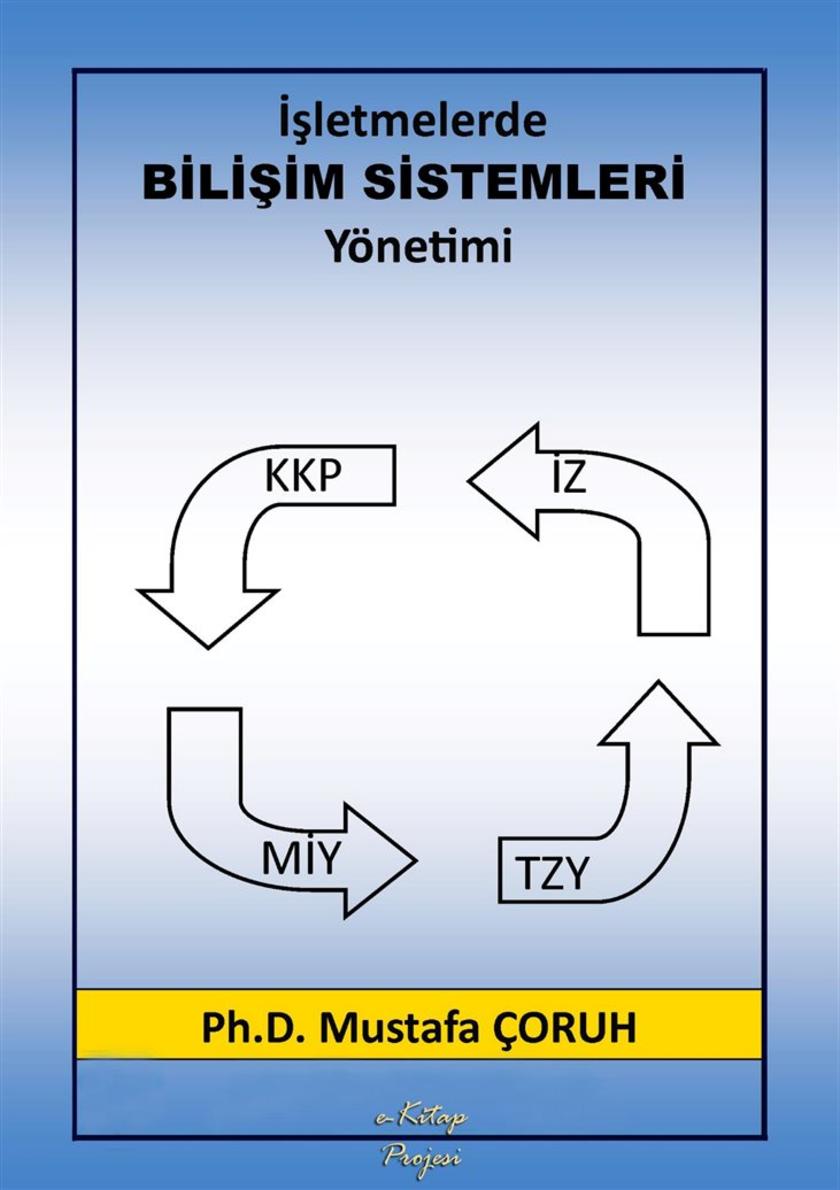
??letmelerde Bili?im Sistemleri Y?netimi
¥28.29
Bu kitap “Bili?im Teknolojileri (BT) Ekonomisi ve Toplumu” adl? ilk kitab?mda BT’lerin hayat?m?z? de?i?tirdi?i d?rt yerdeki (Evde, okulda, kentlerde ve i?yerlerinde) incelememin ü?üncüsü olan i?yerlerindeki etkileri üzerinedir. Daha ?nce “Bili?im Teknolojileri Destekli ??renim” ve “Bili?im Kentleri ?a??” adl? kitaplar?mda BT’lerin okul ve kent ya?am?ndaki etkilerini detaylar?yla inceledim. 30 y?l? a?an i? hayat?mda BT’lerin i? dünyas?n? ve y?netimini kurulan Bili?im Sistemleri (BS) vas?tas?yla nas?l de?i?tirdi?ini ya?ayarak bildi?imden bu konu i?in uzun bir ara?t?rma yapmak zorunda oldu?umu biliyordum. Di?er yandan 592 sayfay? bulan bu ara?t?rmada sayfa s?n?rlamas? amac?yla BS’lerle ilgili baz? konular? (?rne?in Toplam Kalite Y?netimi, 6 Sigma, Simülasyon, Gereksinim Y?netimi, Programlama vs.) kitap haricinde b?rakmak zorunda kald???m? da belirtmeliyim. Bu kitapta a??rl?kl? olarak BT’lerin i?letmelerdeki uygulamas? olan Bili?im Sistemlerinden bahsettim ?ünkü BT’ler BS’ler vas?tas?yla i?letmeleri ve y?netimlerini etkilemektedirler. Dünyan?n en h?zl? bilgisayar?n? veya en yeni ak?ll? telefonunu sat?n alman?z veya en h?zl? internet eri?imine sahip olman?z i?letmeye ekstra bir katk? sa?lamamaktad?r. Ne zaman ki bu ara?lar i?letme süre?lerinin otomasyonunu sa?layan BS’ler i?inde kullan?lmaya ba?lan?nca i?letme rekabet?ili?ine, kar?na veya maliyetlerinin kontrolüne bir faydas? olabilmektedir. Bu yüzden i?letme y?neticilerinin bilmesi gereken en ?nemli konu BT ara?lar?n? ve di?er yeni teknolojik ara?lar? i?letme i? süre?lerinde nas?l verimli ve etkin bir ?ekilde kullanabileceklerini bilmeleridir. Bilmiyorlarsa da bilenleri i?e almalar?d?r. En son yenilikleri kullanmak belki de firmaya zarar vermekte veya rekabet dezavantaj? olu?turmaktad?r. Bu a??dan ?ncelikle bugün BS’lerin hangi i?letme fonksiyonlar?n? nas?l etkiledi?ini ve gelecekte nas?l etkileyebilece?ini anlatmaya ?al??t?m. ?rne?in, Yapay Zek? (YZ) ve onun en ?nemli uygulamalar?ndan birisi olan Robotiklerin i? süre?leri ve i?letme y?netimlerini yak?n bir zamanda nas?l etkileyebilece?inden bahsettim. Endüstri 4.0 teknolojileriyle insan ve makinelerin birlikte nas?l verimli ve etkin bir ?ekilde ?al??malar? gerekti?i insanl???n ve i?letmelerin ?nünde duran en ?nemli konulardan birisi oldu?unu s?ylemek fazla fütüristik bir kehanet de?il. Kitapta ??letmelerde kullan?lan Bili?im Sistemleriyle ilgili temel konulara bir bütünlük i?inde bakarken kitab?n arka kapa??ndaki sorular? cevaplamaya ?al??t?m. Bili?im Sistemleri aras?ndaki ili?kileri, farkl?l?klar?n? ve birbirlerini nas?l tamamlad?klar?n? sat?r aralar?nda vermeye ?al??t?m. BS’lerle i?letme süre?lerinin nas?l bütünle?tirilece?i i?letmelerdeki en yeni y?netim sorunlar? oldu?u unutulmamal?d?r. ??letme y?neticilerinin hat?rlamas? gereken bir ?nemli konuda BS’lerin bir yaz?l?m ve de?i?im projesi olmas?d?r. Bili?im Teknolojileri ve Sistemleri okuryazarl??? i?in bilinmesi gereken baz? teknik, bilimsel ve teknolojik terimlerin k?saltmalar?n? kitapta ilk kullan?ld???nda uzun ve k?salt?lm?? yaz?l?mlar?yla birlikte kulland?m. ?rne?in Veritabanlar? (VT), Veri ??leme Sistemi (V?S), Kurumsal ?? Zek?s? (K?Z), Y?netim Bili?im Sistemi (YBS), Karar Destek Sistemi (KDS), Veri Ambar? (VA), Veri Madencili?i (VM), Kurumsal Kaynak Planlama (KKP), Mü?teri ?li?kileri Y?netimi (M?Y), Tedarik Zinciri Y?netimi (TZY), Ofis Otomasyon Sistemi (OOS) ve Bilgi Y?netimi (BY) en fazla kulland???m k?saltmalard?r. Kitap sonundaki “K?saltmalar” tablosunda tüm k?saltmalar? listelemeye ?al??t?m. Ayr?ca bir?ok terimin ?ngilizcesini de parantez i?inde vermeye ?al??t?m. ?rne?in Veritabanlar? (Database) gibi. Dilimize girmi? bir?ok yabanc? teknik terim ve kelimelerin Türk?esini kullanmaya ?zen g?sterdim ve bu yabanc? kelimeleri de parantez i?inde yazd?m. Ayr?ca BT’lerin BS’ler vas?tas?yla i?letmeler üzerindeki etkilerini incelerken, birazda üniversitelerimizde YBS b?lümlerinde okutulan BS’lerle ilgili uzmanl?k konular?n?n ?o?unu ?zetlemeye ?al??t?m. ?zellikle i? Dünyas?nda ?ok?a kullan?lan baz? konulara (V?S, YBS, KDS, VT, VA, BY, US, KKP, M?Y, Sistem yakla??m?, SGYD vs.) biraz detayl? bakmaya ?al??t?m. K?sacas? kitapta i?letmelerde Bili?im Teknolojileri ve Sistemleri denince akla gelebilecek bir?ok konuya de?inmeye ?al??t?m. Bu yüzden bu kitab?n BS alan?nda bir elkitab? veya kaynak kitap olarak dü?ünülmesinde fayda vard?r. Bu kitapta ilkokul ??retmenim Say?n ?erare ?zya?c? han?mdan, en son Doktora tez dan??man?m say?n Prof. Dr. Len Rogers’a kadar yüzlerce ki?inin eme?inin oldu?u unutulmamal?d?r. 1984’ten beri Türkiye, ABD, Kanada ve ?ngiltere de ?al??t???m veya dan??manl???n? yapt???m onlarca firma ve mü?terilerimin katk?lar?n? unutabilir miyim? Burada isim isim te?ekkür edemedi?im ancak bu kitab?n yaz?lmas?nda katk?lar? olan daha yüzlerce ki?i var, hepsine en i?ten dileklerimle te?ekkür ederim. Hayatta neyi tek ba??m?za yapabiliyoruz ki? Bu kitap 30+ y?ld?r üretim planlama ve stok kontrol müdürü, metot etüdcü, sistem analisti, programc?, VT tasar?mc?s?
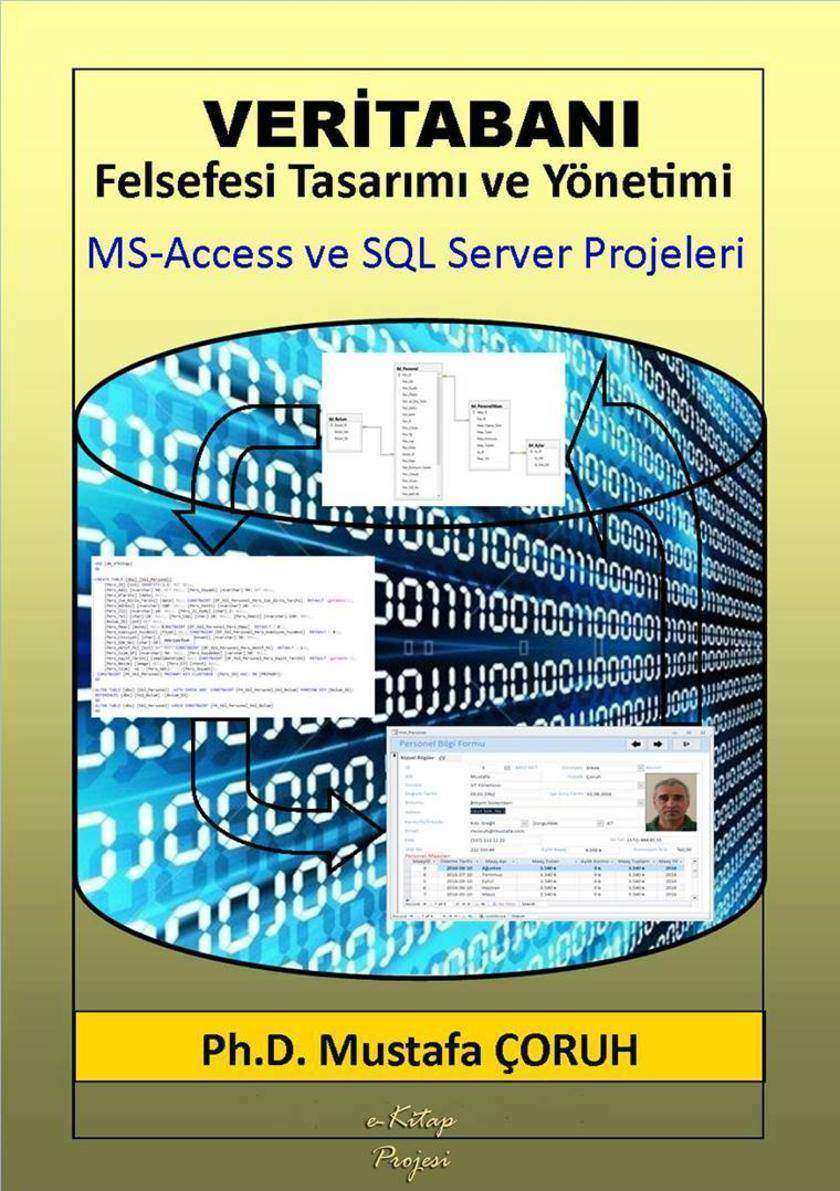
Veritaban?: "Felsefesi, Tasar?m? ve Y?netimi": MS-Access ve SQL Server Projeleri
¥27.88
“Bili?im Teknolojileri” konusunda yazd???m ü? kitaptan sonra as?l uzmanl?k alan?m olan veritabanlar? konusunda uzun y?llar ?nce yazmaya ba?lay?p bitiremedi?im daha do?rusu bas?lmayan bu kitab? güncelleyerek yeniden yazmaya karar vermek benim a??mdan yeni bir heyecan oldu. 1980’lerde COBOL ile ba?layan ve 1990’da dBase ve Informix’le devam eden veritaban? tecrübelerim, 1995 sonras? MS-Access ve SQL Server yard?m?yla geli?tirdi?im 100’e yak?n veritaban? uygulama programlar?yla devam etti. 1996’da Dallas’ta MCI Systemhouse’da FrontPage ve Access 95’le veritaban?na dayal? Intranet web siteleri geli?tiren ilk ki?ilerden birisi ben oldum. 1999’da Movo Mediya’da ilk ??p?atan web sitesi www.dating.com'un?arkas?ndaki SQL Server veritabanlar?n? tasarlayan ve y?neten ki?i de bendim. 2000 y?l?nda Aris Genesis Intermedia Inc’de web tabanl? muhasebe program?n?n arkas?ndaki SQL Server veritaban? tasar?mc?lar?ndan biriside bendim. Büyük al??veri? merkezlerinde g?rülen Kiosk’lar?n SQL Server tabanl? ilk uygulamas?n? Los Angeles’de kuran Genesis Intermedia Inc’deki tasar?mlar? yapan ki?ilerden birisi de bendim. 2001’de Los Angeles’de SQL Server ve ASP 3.0’la Citibank’ta kredi kartlar?yla ilgili projenin mimarlar?ndan biriside bendim. K?sacas? Veritabanlar?n?n Web’de kullan?lmas?nda ilk ?al??an ve tasarlayanlardan birisi oldu?umu s?ylemeliyim. 1995-2000 y?llar? aras?nda ya?anan ve dot com bom olarak bilinen metaforun i?inde bir fiil ?al??an ve yarat?c?lar?ndan birisiydim. Veritabanlar?n?n Internet’e ba?lanmas? i?in geli?tirilen ilk projelerinde uzun y?llar Kalifornya, New York ve Colorado firmalar?nda ?al??t?m ve dan??manl?k yapt?m. Bu tecrübelerim s?ras?nda ??rendi?im en ?nemli ?ey; tek bir konuda uzman olmak gerekti?idir. Ben Ms-Access ve SQL Server veritabanlar? tasar?m?nda uzmanla?t?m. Bir?ok teklif olmas?na ra?men Oracle, DB2, Aproach, File Maker gibi veritabanlar? tasar?mlar?yla ilgilenmedim ?ünkü her biri ayr? bir uzmanl?k isteyen veritaban? yaz?l?mlar?d?r. Bu a??dan ?zellikle Bili?im sekt?ründe ?al??anlara verebilece?im en ?nemli tavsiye tek bir konuda hatta tek bir programda uzmanla?malar?d?r. Kitapta Veritabanlar? tasar?m?n? Access ve SQL Server projeleri üzerinden anlatmaya ?al??t?m. University of Phoenix’de verdi?im Veritabanlar? ve Veri Ambarlar? ders notlar?m bu kitab?n omurgas?n? olu?turmaktad?r. Veritabanlar?yla ilgili kavramlar?, felsefesini, tasar?m?n? ve birazda y?netimini detaylar?yla anlatmaya ?al??t?m. Umut ediyorum ki yeni Veritaban? tasar?mc?lar? ve y?neticilerine burada payla?t???m enformasyon faydal? olur. 30 y?ll?k Bili?im Teknolojileri ve ?zellikle veritaban? alan?ndaki tecrübelerimin bir?o?unu bu kitapta okuyucularla payla?maya ?al??t?m. Daha ?nceki kitaplar?mda da vurgulad???m gibi bu kitapta da ilkokul ??retmenim Say?n ?erare ?zya?c? han?mdan, en son Doktora tez dan??man?m Say?n Prof. Dr. Len Rogers’a kadar yüzlerce ki?inin eme?inin oldu?u unutulmamal?d?r. 1984’ten beri Türkiye, ABD, Kanada ve ?ngiltere de ?al??t???m veya dan??manl???n? yapt???m onlarca firma ve mü?terilerimin katk?lar?n? unutabilir miyim? Di?er kitaplarda oldu?u gibi bu kitab?n yaz?lmas?nda bana katlanan e?im Meliha ?oruh’a ve o?lum Bu?ra’ya da en ba?tan te?ekkür etmeliyim. Burada isim isim te?ekkür edemedi?im ancak bu kitab?n yaz?lmas?nda katk?lar? olan daha yüzlerce ki?i var, hepsine en i?ten dileklerimle te?ekkür ediyorum. Elinizde tuttu?unuz bu kitap 30 y?ld?r Bili?im Teknolojileri alan?nda yapt???m ??retim, ?al??ma ve tecrübelerin veritabanlar? alan?nda kay?t alt?na al?nm?? bir ?zetidir. Tabii ki kitab?n hatalar? ve eksikleri vard?r ve bunlar tamamen bana aittir. Kitapta Veritabanlar? denince akla gelebilecek bir?ok konuya de?inmeye ?al??t?m. Kitapta teori ile uygulamay? birlikte harmanlamaya ?al??t?m. Bu yüzden bu kitab?n bir elkitab? veya kaynak kitap olarak dü?ünülmesinde fayda vard?r. ? Mustafa ?oruh Kdz. Ere?li, Mart 2017
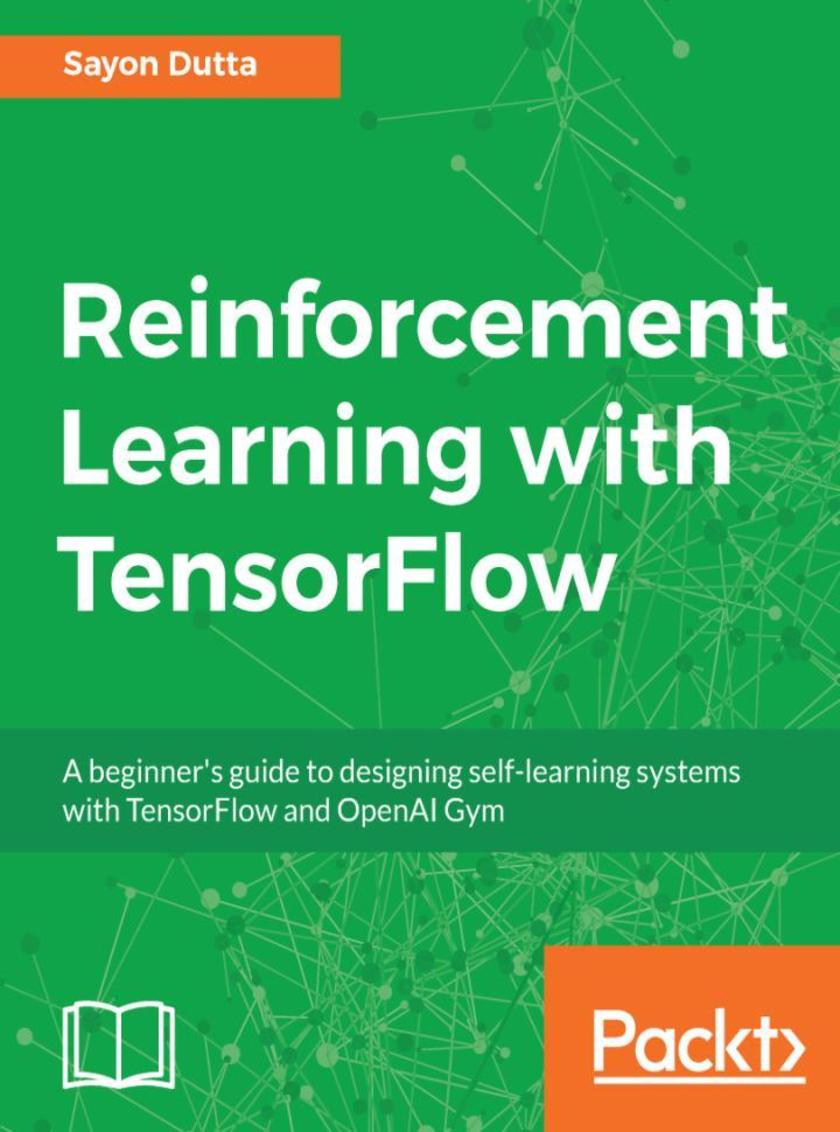
Reinforcement Learning with TensorFlow
¥90.46
Leverage the power of the Reinforcement Learning techniques to develop self-learning systems using Tensorflow About This Book ? Learn reinforcement learning concepts and their implementation using TensorFlow ? Discover different problem-solving methods for Reinforcement Learning ? Apply reinforcement learning for autonomous driving cars, robobrokers, and more Who This Book Is For If you want to get started with reinforcement learning using TensorFlow in the most practical way, this book will be a useful resource. The book assumes prior knowledge of machine learning and neural network programming concepts, as well as some understanding of the TensorFlow framework. No previous experience with Reinforcement Learning is required. What You Will Learn ? Implement state-of-the-art Reinforcement Learning algorithms from the basics ? Discover various techniques of Reinforcement Learning such as MDP, Q Learning and more ? Learn the applications of Reinforcement Learning in advertisement, image processing, and NLP ? Teach a Reinforcement Learning model to play a game using TensorFlow and the OpenAI gym ? Understand how Reinforcement Learning Applications are used in robotics In Detail Reinforcement Learning (RL), allows you to develop smart, quick and self-learning systems in your business surroundings. It is an effective method to train your learning agents and solve a variety of problems in Artificial Intelligence—from games, self-driving cars and robots to enterprise applications that range from datacenter energy saving (cooling data centers) to smart warehousing solutions. The book covers the major advancements and successes achieved in deep reinforcement learning by synergizing deep neural network architectures with reinforcement learning. The book also introduces readers to the concept of Reinforcement Learning, its advantages and why it’s gaining so much popularity. The book also discusses on MDPs, Monte Carlo tree searches, dynamic programming such as policy and value iteration, temporal difference learning such as Q-learning and SARSA. You will use TensorFlow and OpenAI Gym to build simple neural network models that learn from their own actions. You will also see how reinforcement learning algorithms play a role in games, image processing and NLP. By the end of this book, you will have a firm understanding of what reinforcement learning is and how to put your knowledge to practical use by leveraging the power of TensorFlow and OpenAI Gym. Style and approach An Easy-to-follow, step-by-step guide to help you get to grips with real-world applications of Reinforcement Learning with TensorFlow.
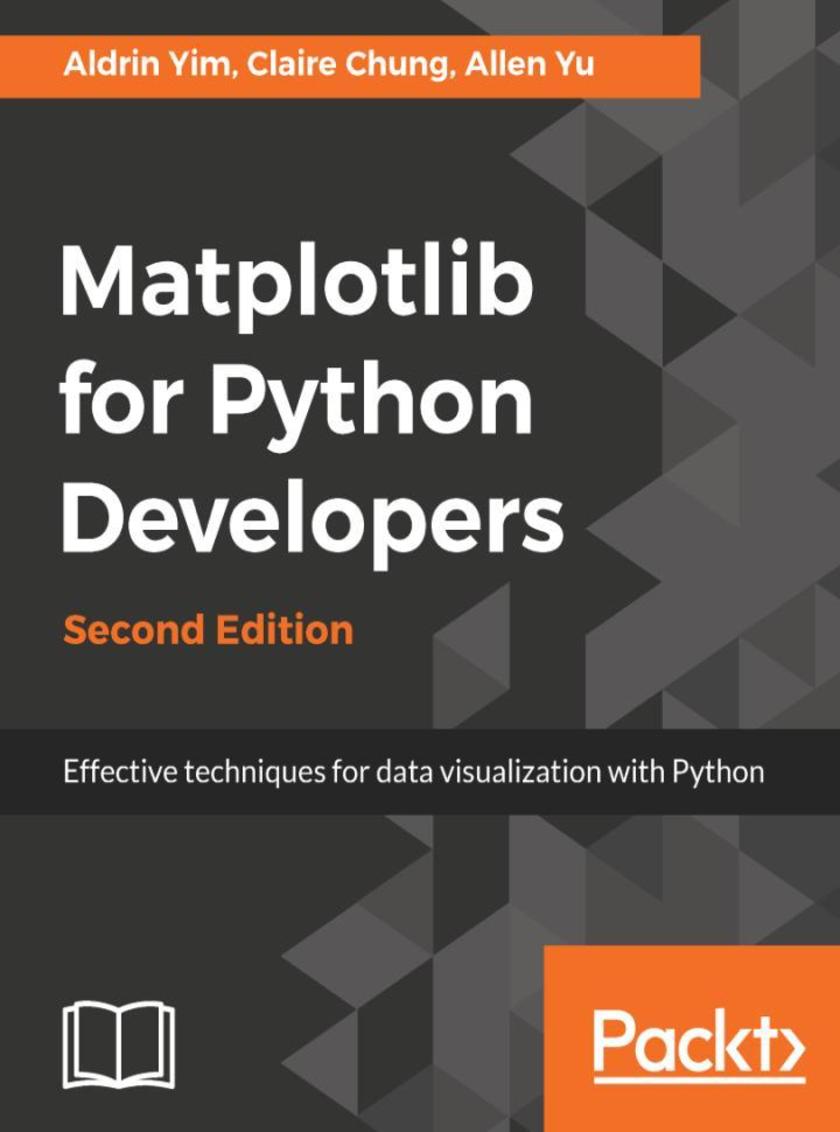
Matplotlib for Python Developers
¥73.02
Leverage the power of Matplotlib to visualize and understand your data more effectively About This Book ? Perform effective data visualization with Matplotlib and get actionable insights from your data ? Design attractive graphs, charts, and 2D plots, and deploy them to the web ? Get the most out of Matplotlib in this practical guide with updated code and examples Who This Book Is For This book is essentially for anyone who wants to create intuitive data visualizations using the Matplotlib library. If you’re a data scientist or analyst and wish to create attractive visualizations using Python, you’ll find this book useful. Some knowledge of Python programming is all you need to get started. What You Will Learn ? Create 2D and 3D static plots such as bar charts, heat maps, and scatter plots ? Get acquainted with GTK+3, Qt5, and wxWidgets to understand the UI backend of Matplotlib ? Develop advanced static plots with third-party packages such as Pandas, GeoPandas, and Seaborn ? Create interactive plots with real-time updates ? Develop web-based, Matplotlib-powered graph visualizations with third-party packages such as Django ? Write data visualization code that is readily expandable on the cloud platform In Detail Python is a general-purpose programming language increasingly being used for data analysis and visualization. Matplotlib is a popular data visualization package in Python used to design effective plots and graphs. This is a practical, hands-on resource to help you visualize data with Python using the Matplotlib library. Matplotlib for Python Developers, Second Edition shows you how to create attractive graphs, charts, and plots using Matplotlib. You will also get a quick introduction to third-party packages, Seaborn, Pandas, Basemap, and Geopandas, and learn how to use them with Matplotlib. After that, you’ll embed and customize your plots in third-party tools such as GTK+3, Qt 5, and wxWidgets. You’ll also be able to tweak the look and feel of your visualization with the help of practical examples provided in this book. Further on, you’ll explore Matplotlib 2.1.x on the web, from a cloud-based platform using third-party packages such as Django. Finally, you will integrate interactive, real-time visualization techniques into your current workflow with the help of practical real-world examples. By the end of this book, you’ll be thoroughly comfortable with using the popular Python data visualization library Matplotlib 2.1.x and leveraging its power to build attractive, insightful, and powerful visualizations. Style and approach Step by step approach to learning the best of Matplotlib 2.1.x
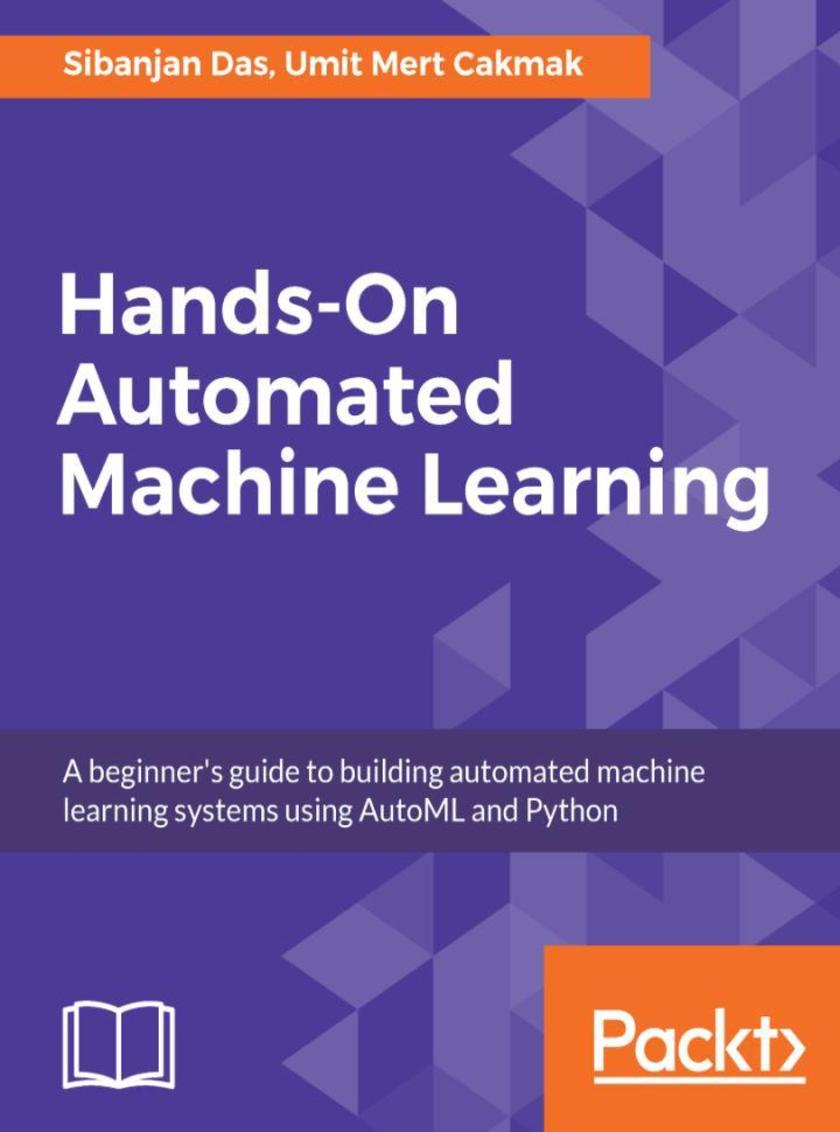
Hands-On Automated Machine Learning
¥73.02
Automate data and model pipelines for faster machine learning applications About This Book ? Build automated modules for different machine learning components ? Understand each component of a machine learning pipeline in depth ? Learn to use different open source AutoML and feature engineering platforms Who This Book Is For If you’re a budding data scientist, data analyst, or Machine Learning enthusiast and are new to the concept of automated machine learning, this book is ideal for you. You’ll also find this book useful if you’re an ML engineer or data professional interested in developing quick machine learning pipelines for your projects. Prior exposure to Python programming will help you get the best out of this book. What You Will Learn ? Understand the fundamentals of Automated Machine Learning systems ? Explore auto-sklearn and MLBox for AutoML tasks ? Automate your preprocessing methods along with feature transformation ? Enhance feature selection and generation using the Python stack ? Assemble individual components of ML into a complete AutoML framework ? Demystify hyperparameter tuning to optimize your ML models ? Dive into Machine Learning concepts such as neural networks and autoencoders ? Understand the information costs and trade-offs associated with AutoML In Detail AutoML is designed to automate parts of Machine Learning. Readily available AutoML tools are making data science practitioners’ work easy and are received well in the advanced analytics community. Automated Machine Learning covers the necessary foundation needed to create automated machine learning modules and helps you get up to speed with them in the most practical way possible. In this book, you’ll learn how to automate different tasks in the machine learning pipeline such as data preprocessing, feature selection, model training, model optimization, and much more. In addition to this, it demonstrates how you can use the available automation libraries, such as auto-sklearn and MLBox, and create and extend your own custom AutoML components for Machine Learning. By the end of this book, you will have a clearer understanding of the different aspects of automated Machine Learning, and you’ll be able to incorporate automation tasks using practical datasets. You can leverage your learning from this book to implement Machine Learning in your projects and get a step closer to winning various machine learning competitions. Style and approach Step by step approach to understand how to automate your machine learning tasks
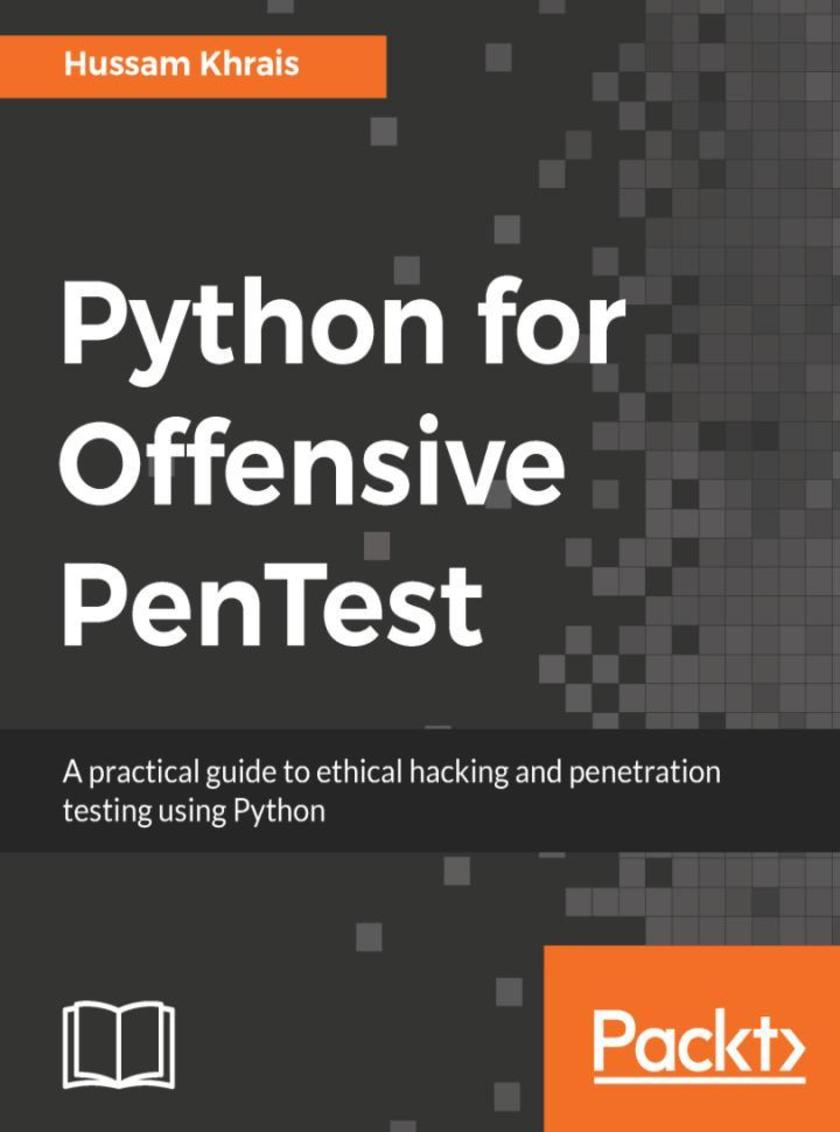
Python for Offensive PenTest
¥54.49
Your one-stop guide to using Python, creating your own hacking tools, and making the most out of resources available for this programming language About This Book ? Comprehensive information on building a web application penetration testing framework using Python ? Master web application penetration testing using the multi-paradigm programming language Python ? Detect vulnerabilities in a system or application by writing your own Python scripts Who This Book Is For This book is for ethical hackers; penetration testers; students preparing for OSCP, OSCE, GPEN, GXPN, and CEH; information security professionals; cybersecurity consultants; system and network security administrators; and programmers who are keen on learning all about penetration testing. What You Will Learn ? Code your own reverse shell (TCP and HTTP) ? Create your own anonymous shell by interacting with Twitter, Google Forms, and SourceForge ? Replicate Metasploit features and build an advanced shell ? Hack passwords using multiple techniques (API hooking, keyloggers, and clipboard hijacking) ? Exfiltrate data from your target ? Add encryption (AES, RSA, and XOR) to your shell to learn how cryptography is being abused by malware ? Discover privilege escalation on Windows with practical examples ? Countermeasures against most attacks In Detail Python is an easy-to-learn and cross-platform programming language that has unlimited third-party libraries. Plenty of open source hacking tools are written in Python, which can be easily integrated within your script. This book is packed with step-by-step instructions and working examples to make you a skilled penetration tester. It is divided into clear bite-sized chunks, so you can learn at your own pace and focus on the areas of most interest to you. This book will teach you how to code a reverse shell and build an anonymous shell. You will also learn how to hack passwords and perform a privilege escalation on Windows with practical examples. You will set up your own virtual hacking environment in VirtualBox, which will help you run multiple operating systems for your testing environment. By the end of this book, you will have learned how to code your own scripts and mastered ethical hacking from scratch. Style and approach This book follows a practical approach that takes a gradual learning curve, building up your knowledge about ethical hacking, right from scratch. The focus is less on theory and more on practical examples through a step-by-step approach.

C# Data Structures and Algorithms
¥90.46
A complete guide on using data structures and algorithms to write sophisticated C# code About This Book ? Master array, set and map with trees and graphs, among other fundamental data structures ? Delve into effective design and implementation techniques to meet your software requirements ? Explore illustrations to present data structures and algorithms, as well as their analysis in a clear, visual manner. Who This Book Is For This book is for developers who would like to learn the Data Structures and Algorithms in C#. Basic C# programming knowledge would be an added advantage. What You Will Learn ? How to use arrays and lists to get better results in complex scenarios ? Implement algorithms like the Tower of Hanoi on stacks of C# objects ? Build enhanced applications by using hashtables, dictionaries and sets ? Make a positive impact on efficiency of applications with tree traversal ? Effectively find the shortest path in the graph In Detail Data structures allow organizing data efficiently. They are critical to various problems and their suitable implementation can provide a complete solution that acts like reusable code. In this book, you will learn how to use various data structures while developing in the C# language as well as how to implement some of the most common algorithms used with such data structures. At the beginning, you will get to know arrays, lists, dictionaries, and sets together with real-world examples of your application. Then, you will learn how to create and use stacks and queues. In the following part of the book, the more complex data structures will be introduced, namely trees and graphs, together with some algorithms for searching the shortest path in a graph. We will also discuss how to organize the code in a manageable, consistent, and extendable way. By the end of the book,you will learn how to build components that are easy to understand, debug, and use in different applications. Style and approach Readers will be taken through all the indispensable data structures and algorithms so they can begin their coding journey in C#. At each step, the book will show how to implement these via examples while also discussing the attributes of each algorithm so readers are capable to make an informed choice.
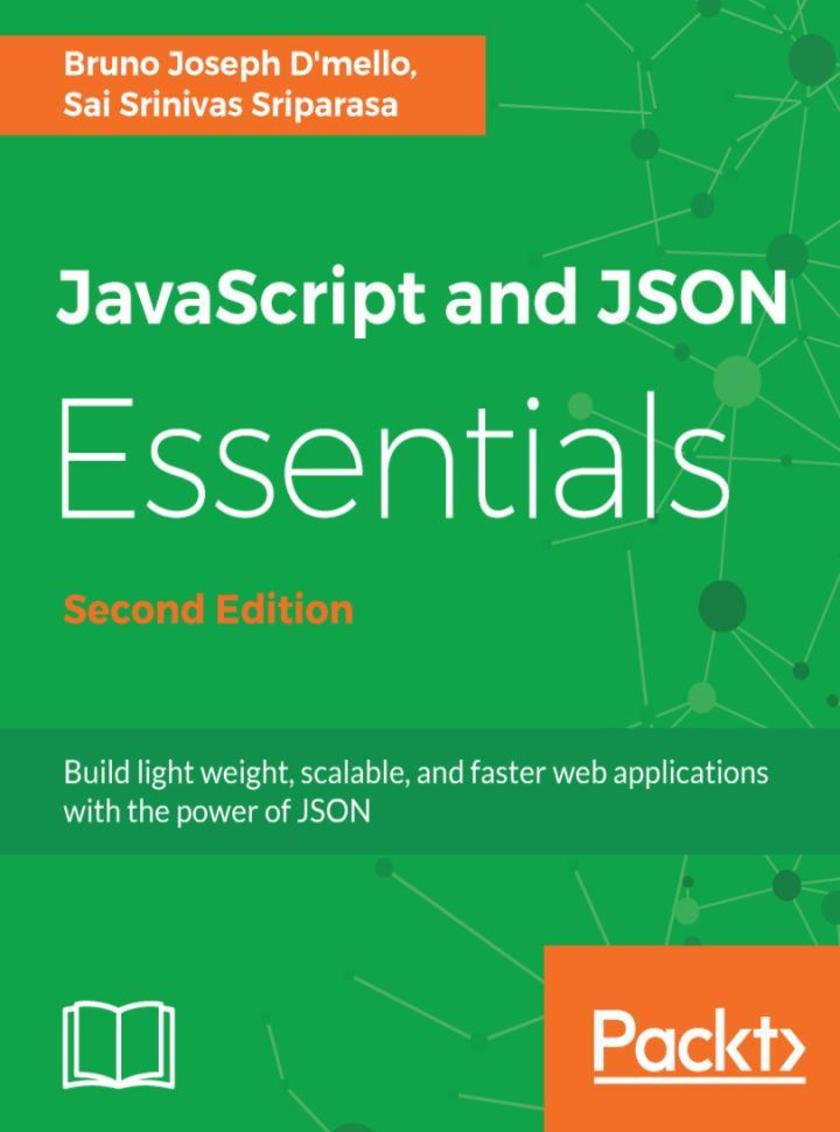
JavaScript and JSON Essentials
¥54.49
Use JSON for building web applications with technologies like HTML, JavaScript, Angular, Node.js, Hapi.js, Kafka, socket.io, MongoDB, Gulp.js, and handlebar.js, and others formats like GEOJSON, JSON-LD, MessagePack, and BSON. About This Book ? Use JSON with trending technologies like Angular, Hapi.js, MongoDB, Kafka, and Socket.io ? Debug, validate, and format JSON using developer toolkits, JSONLint, and JSON Editor Online ? Explore other JSON formats like GeoJSON, JSON-LD, BSON, and MessagePack Who This Book Is For If you’re a web developer with a basic understanding of JavaScript and want to write JSON data, integrate it with RESTful APIs to create faster and scalable applications, this book is for you. What You Will Learn ? Use JSON to store metadata for dependency managers, package managers, configuration managers, and metadata stores ? Handle asynchronous behavior in applications using callbacks, promises, generators, and async-await functions ? Use JSON for Angular 5, Node.js, Gulp.js, and Hapi.js ? Implement JSON as BSON in MongoDB ? Make use of JSON in developing automation scripts ? Implement JSON for realtime using socket.io and distributed systems using Kafka In Detail JSON is an established and standard format used to exchange data. This book shows how JSON plays different roles in full web development through examples. By the end of this book, you'll have a new perspective on providing solutions for your applications and handling their complexities. After establishing a strong basic foundation with JSON, you'll learn to build frontend apps by creating a carousel. Next, you'll learn to implement JSON with Angular 5, Node.js, template embedding, and composer.json in PHP. This book will also help you implement Hapi.js (known for its JSON-configurable architecture) for server-side scripting. You'll learn to implement JSON for real-time apps using Kafka, as well as how to implement JSON for a task runner, and for MongoDB BSON storage. The book ends with some case studies on JSON formats to help you sharpen your creativity by exploring futuristic JSON implementations. By the end of the book, you'll be up and running with all the essential features of JSON and JavaScript and able to build fast, scalable, and efficient web applications. Style and approach JavaScript and JSON Essentials, Second Edition, takes you on a fast-paced, hands-on journey through building lightweight, scalable and faster web applications with JSON.
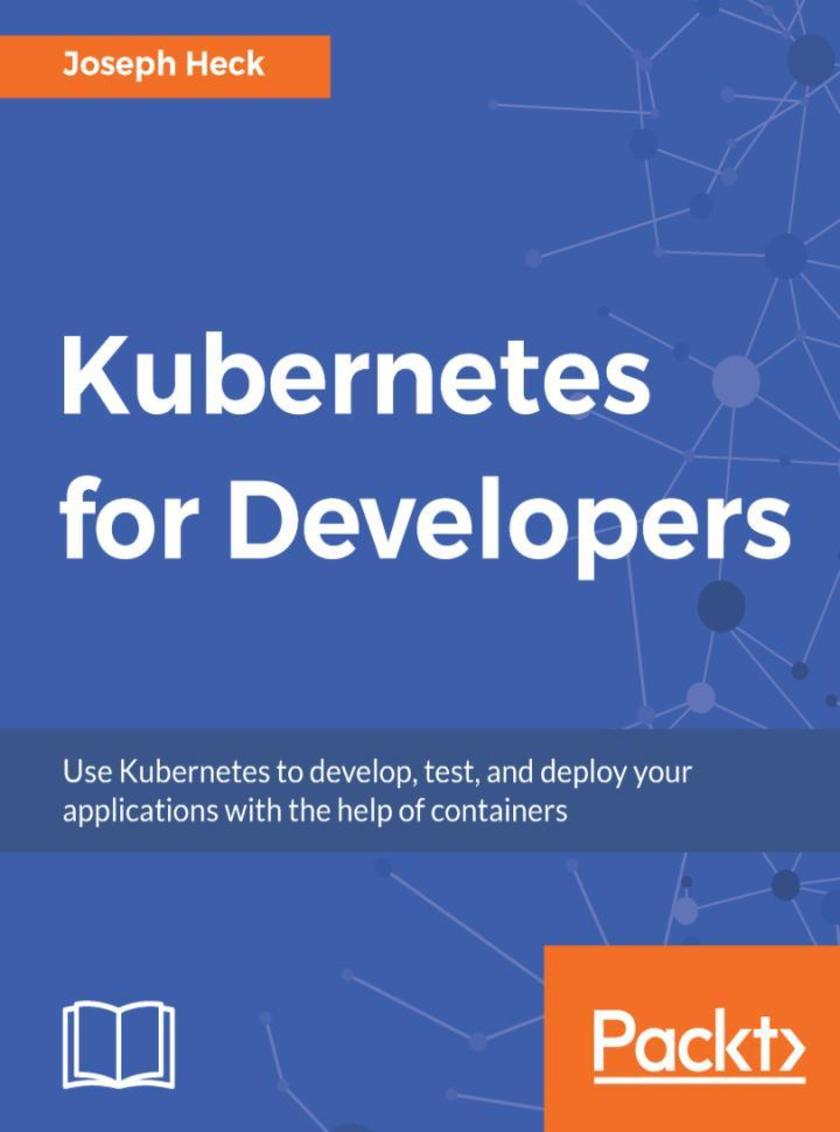
Kubernetes for Developers
¥81.74
A developer's field-guide to designing scalable services using Kubernetes About This Book ? Develop and run your software using containers within a Kubernetes environment ? Get hands-on experience of using Kubernetes with DevOps concepts such as continuous integration, benchmark testing, monitoring, and so on ? Pragmatic example-based approach showing how to use Kubernetes in the development process Who This Book Is For If you are a full-stack or back-end software developers interested, curious, or being asked to test as well as run the code you're creating, you can leverage Kubernetes to make that process simpler and consistent regardless of where you deploy. If you're looking for developer focused examples in NodeJS and Python for how to build, test, deploy, and run your code with Kubernetes, this is perfect for you. What You Will Learn ? Build your software into containers ? Deploy and debug software running in containers within Kubernetes ? Declare and add configuration through Kubernetes ? Define how your application fits together, using internal and external services ? Add feedback to your code to help Kubernetes manage your services ? Monitor and measure your services through integration testing and in production deployments In Detail Kubernetes is documented and typically approached from the perspective of someone running software that has already been built. Kubernetes may also be used to enhance the development process, enabling more consistent testing and analysis of code to help developers verify not only its correctness, but also its efficiency. This book introduces key Kubernetes concepts, coupled with examples of how to deploy and use them with a bit of Node.js and Python example code, so that you can quickly replicate and use that knowledge. You will begin by setting up Kubernetes to help you develop and package your code. We walk you through the setup and installation process before working with Kubernetes in the development environment. We then delve into concepts such as automating your build process, autonomic computing, debugging, and integration testing. This book covers all the concepts required for a developer to work with Kubernetes. By the end of this book, you will be in a position to use Kubernetes in development ecosystems. Style and approach This book will cover examples using NodeJS and Python that walk you through building containers, defining your deployments, deploying, debugging, testing, and generally interacting with your code running on Kubernetes. The examples are focused on common development needs, and include pragmatic advice and the explanations behind that advice.
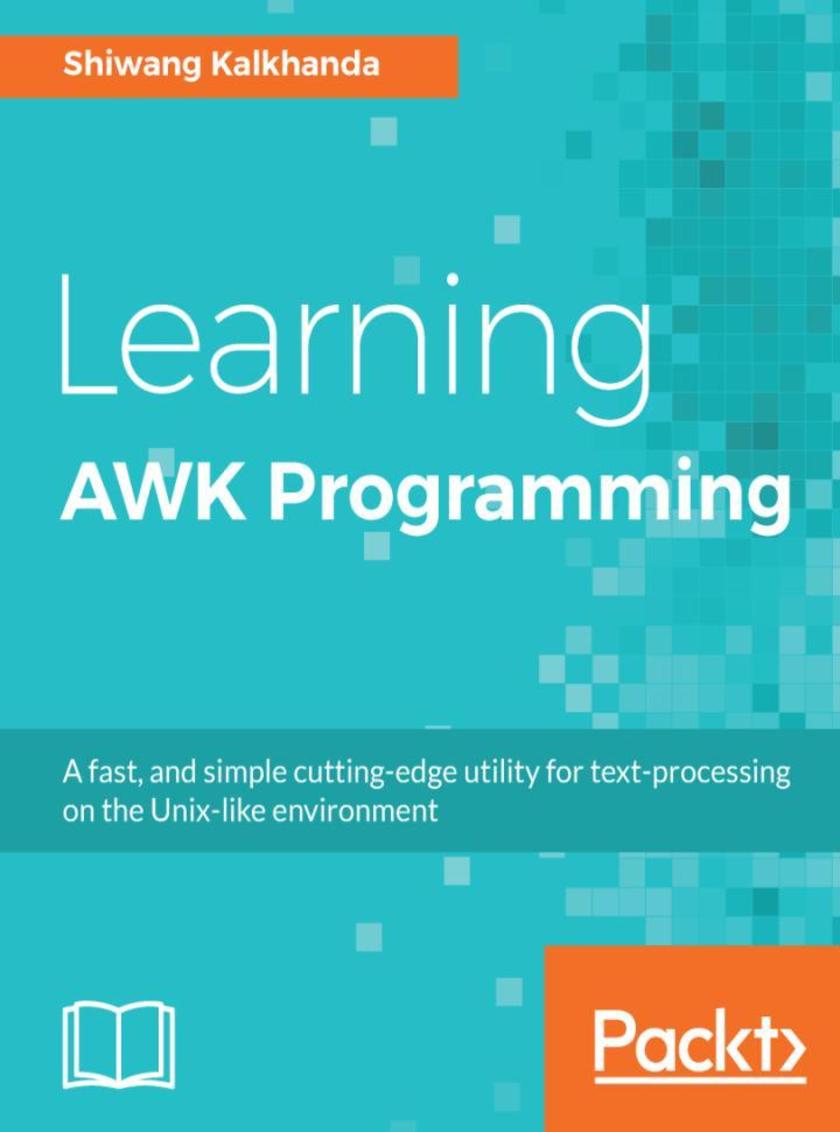
Learning AWK Programming
¥73.02
Text processing and pattern matching simplified About This Book ? Master the fastest and most elegant big data munging language ? Implement text processing and pattern matching using the advanced features of AWK and GAWK ? Implement debugging and inter-process communication using GAWK Who This Book Is For This book is for developers or analysts who are inclined to learn how to do text processing and data extraction in a Unix-like environment. Basic understanding of Linux operating system and shell scripting will help you to get the most out of the book. What You Will Learn ? Create and use different expressions and control flow statements in AWK ? Use Regular Expressions with AWK for effective text-processing ? Use built-in and user-defined variables to write AWK programs ? Use redirections in AWK programs and create structured reports ? Handle non-decimal input, 2-way inter-process communication with Gawk ? Create small scripts to reformat data to match patterns and process texts In Detail AWK is one of the most primitive and powerful utilities which exists in all Unix and Unix-like distributions. It is used as a command-line utility when performing a basic text-processing operation, and as programming language when dealing with complex text-processing and mining tasks. With this book, you will have the required expertise to practice advanced AWK programming in real-life examples. The book starts off with an introduction to AWK essentials. You will then be introduced to regular expressions, AWK variables and constants, arrays and AWK functions and more. The book then delves deeper into more complex tasks, such as printing formatted output in AWK, control flow statements, GNU's implementation of AWK covering the advanced features of GNU AWK, such as network communication, debugging, and inter-process communication in the GAWK programming language which is not easily possible with AWK. By the end of this book, the reader will have worked on the practical implementation of text processing and pattern matching using AWK to perform routine tasks. Style and approach An easy-to-follow, step by step guide which will help you get to grips with real-world applications of AWK programming.
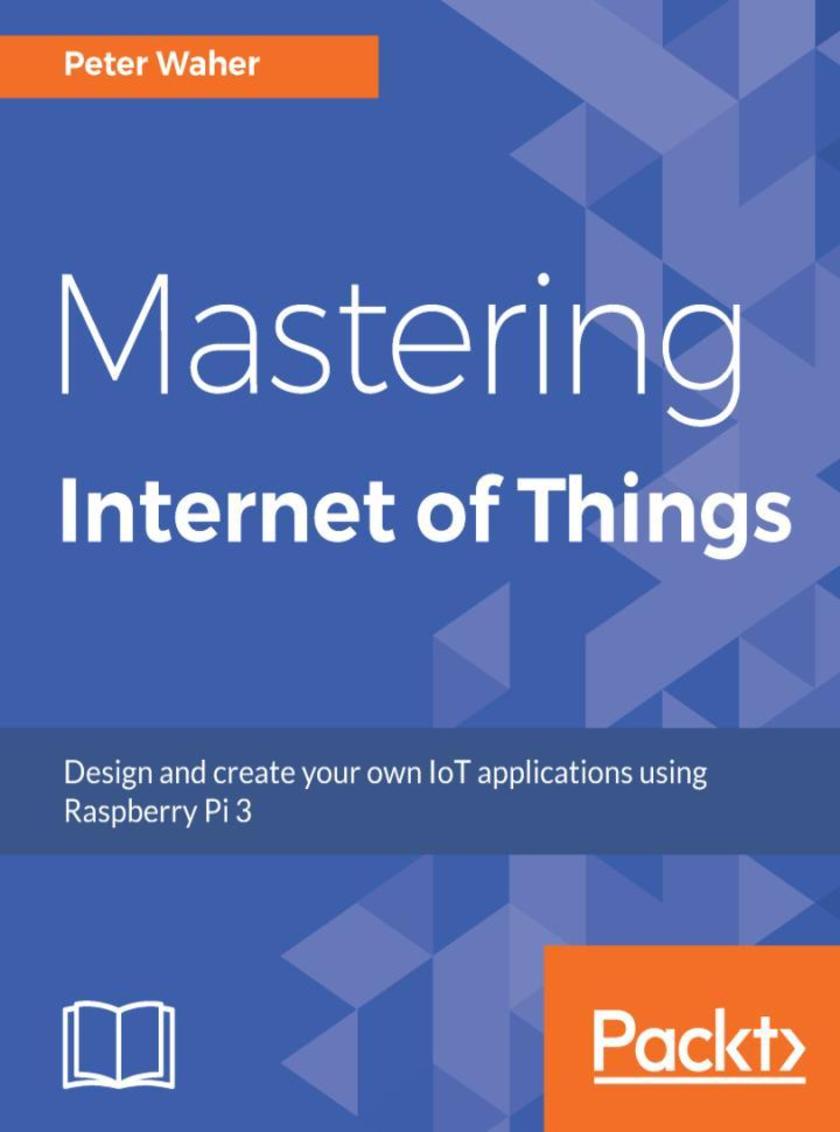
Mastering Internet of Things
¥81.74
Augment your IoT skills with the help of engaging and enlightening tutorials designed for Raspberry Pi 3 About This Book ? Design and implement state-of-the-art solutions for the Internet of Things ? Build complex projects using motions detectors, controllers, sensors, and Raspberry Pi 3 ? A hands-on guide that provides interoperable solutions for sensors, actuators, and controllers Who This Book Is For If you're a developer or electronic engineer and are curious about the Internet of Things, this is the book for you. With only a rudimentary understanding of electronics and Raspberry Pi 3, and some programming experience using managed code, such as C# or Java, you will be taught to develop state-of-the-art solutions for the Internet of Things. What You Will Learn ? Create your own project, run and debug it ? Master different communication patterns using the MQTT, HTTP, CoAP, LWM2M and XMPP protocols ? Build trust-based as hoc networks for open, secure and interoperable communication ? Explore the IoT Service Platform ? Manage the entire product life cycle of devices ? Understand and set up the security and privacy features required for your system ? Master interoperability, and how it is solved in the realms of HTTP,CoAP, LWM2M and XMPP In Detail The Internet of Things (IoT) is the fastest growing technology market. Industries are embracing IoT technologies to improve operational expenses, product life, and people's well-being. Mastering Internet of Things starts by presenting IoT fundamentals and the smart city. You will learn the important technologies and protocols that are used for the Internet of Things, their features, corresponding security implications, and practical examples on how to use them. This book focuses on creating applications and services for the Internet of Things. Further, you will learn to create applications and services for the Internet of Things. You will be discover various interesting projects and understand how to publish sensor data, control devices, and react to asynchronous events using the XMPP protocol. The book also introduces chat, to interact with your devices. You will learn how to automate your tasks by using Internet of Things Service Platforms as the base for an application. You will understand the subject of privacy, requirements they should be familiar with, and how to avoid violating any of the important new regulations being introduced. At the end of the book, you will have mastered creating open, interoperable and secure networks of things, protecting the privacy and integrity of your users and their information. Style and approach This mastering-level guide will immerse you in the advanced functionalities of IoT, along with extending them, and finishes up with security and privacy techniques.

Rust High Performance
¥81.74
Find bottlenecks, identify the proper algorithm to use, optimize performance, and create really efficient Rust applications About This Book ? Understand common performance pitfalls and improve the performance of your applications. ? Get to grips with parallel programming and multithreading with Rust. ? Learn metaprogramming in Rust. Who This Book Is For This book is for Rust developers keen to improve the speed of their code or simply to take their skills to the next level. What You Will Learn ? Master tips and tricks to make your code faster. ? Learn how to identify bottlenecks in your Rust applications ? Discover how to profile your Rust software. ? Understand the type system to create compile-time optimizations. ? Master the borrow checker . ? Learn metaprogramming in Rust to avoid boilerplate code. ? Discover multithreading and work stealing in Rust. ? Understand asynchronous programming in Rust. In Detail At times, it is difficult to get the best performance out of Rust. This book teaches you to optimize the speed of your Rust code to the level of languages such as C/C++. You'll understand and fix common pitfalls, learn how to improve your productivity by using metaprogramming, and speed up your code by concurrently executing parts of it safely and easily. You will master the features of the language which will make you stand out and use them to really improve the efficiency of your algorithms The book begins with a gentle introduction to help you identify bottlenecks when programming in Rust. We highlight common performance pitfalls, along with strategies to detect and resolve these issues early. We move on to mastering Rust's type system, which will enable us to create impressive optimizations in both performance and safety at compile time. You will then learn how to effectively manage memory in Rust, mastering the borrow checker. We move on to measuring performance and you will see how this affects the way you write code. Moving ahead, you will perform metaprogramming in Rust to boost the performance of your code and your productivity. You will finally learn parallel programming in Rust, which enables efficient and faster execution by using multithreading and asynchronous programming. Style and approach You'll embark on a learning journey that will teach about you deep-core concepts in the Rust language. Learning those concepts—such as understanding the borrow checker—will make you competent to write more efficient Rust code. To learn those core concepts, you'll perform practical work and see for yourself how specific patterns improve the performance of your code.

TensorFlow Deep Learning Projects
¥73.02
Leverage the power of Tensorflow to design deep learning systems for a variety of real-world scenarios About This Book ? Build efficient deep learning pipelines using the popular Tensorflow framework ? Train neural networks such as ConvNets, generative models, and LSTMs ? Includes projects related to Computer Vision, stock prediction, chatbots and more Who This Book Is For This book is for data scientists, machine learning developers as well as deep learning practitioners, who want to build interesting deep learning projects that leverage the power of Tensorflow. Some understanding of machine learning and deep learning, and familiarity with the TensorFlow framework is all you need to get started with this book. What You Will Learn ? Set up the TensorFlow environment for deep learning ? Construct your own ConvNets for effective image processing ? Use LSTMs for image caption generation ? Forecast stock prediction accurately with an LSTM architecture ? Learn what semantic matching is by detecting duplicate Quora questions ? Set up an AWS instance with TensorFlow to train GANs ? Train and set up a chatbot to understand and interpret human input ? Build an AI capable of playing a video game by itself –and win it! In Detail TensorFlow is one of the most popular frameworks used for machine learning and, more recently, deep learning. It provides a fast and efficient framework for training different kinds of deep learning models, with very high accuracy. This book is your guide to master deep learning with TensorFlow with the help of 10 real-world projects. TensorFlow Deep Learning Projects starts with setting up the right TensorFlow environment for deep learning. Learn to train different types of deep learning models using TensorFlow, including Convolutional Neural Networks, Recurrent Neural Networks, LSTMs, and Generative Adversarial Networks. While doing so, you will build end-to-end deep learning solutions to tackle different real-world problems in image processing, recommendation systems, stock prediction, and building chatbots, to name a few. You will also develop systems that perform machine translation, and use reinforcement learning techniques to play games. By the end of this book, you will have mastered all the concepts of deep learning and their implementation with TensorFlow, and will be able to build and train your own deep learning models with TensorFlow confidently. Style and approach This book contains 10 unique, end-to-end projects covering all aspects of deep learning and their implementations with TensorFlow. Each project will equip you with a unique skillset in training efficient deep learning models, and empower you to implement your own projects more confidently
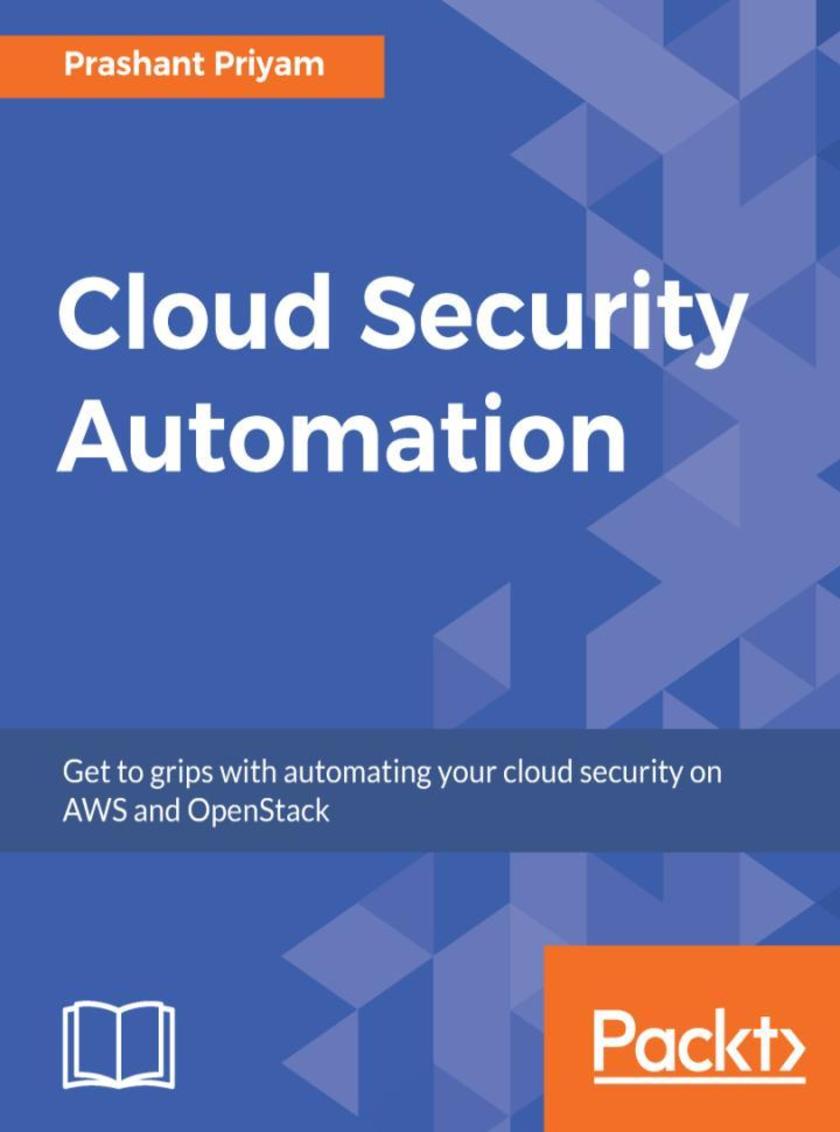
Cloud Security Automation
¥81.74
Secure public and private cloud workloads with this comprehensive learning guide. About This Book ? Take your cloud security functions to the next level by automation ? Learn to automate your security functions on AWS and OpenStack ? Practical approach towards securing your workloads efficiently Who This Book Is For This book is targeted at DevOps Engineers, Security professionals, or any stakeholders responsible for securing cloud workloads. Prior experience with AWS or OpenStack will be an advantage. What You Will Learn ? Define security for public and private cloud services ? Address the security concerns of your cloud ? Understand Identity and Access Management ? Get acquainted with cloud storage and network security ? Improve and optimize public and private cloud security ? Automate cloud security ? Understand the security compliance requirements of your cloud In Detail Security issues are still a major concern for all IT organizations. For many enterprises, the move to cloud computing has raised concerns for security, but when applications are architected with focus on security, cloud platforms can be made just as secure as on-premises platforms. Cloud instances can be kept secure by employing security automation that helps make your data meet your organization's security policy. This book starts with the basics of why cloud security is important and how automation can be the most effective way of controlling cloud security. You will then delve deeper into the AWS cloud environment and its security services by dealing with security functions such as Identity and Access Management and will also learn how these services can be automated. Moving forward, you will come across aspects such as cloud storage and data security, automating cloud deployments, and so on. Then, you'll work with OpenStack security modules and learn how private cloud security functions can be automated for better time- and cost-effectiveness. Toward the end of the book, you will gain an understanding of the security compliance requirements for your Cloud. By the end of this book, you will have hands-on experience of automating your cloud security and governance. Style and approach This book follows a step-by-step, practical approach to help automate and secure your cloud account structure in an Amazon Web Services (AWS) and OpenStack environment.




 购物车
购物车 个人中心
个人中心



